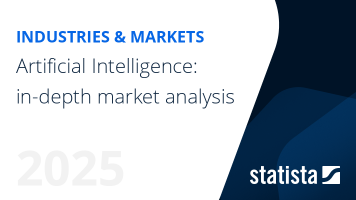Artificial intelligence (AI) worldwide - statistics & facts
AI comes in many forms
AI is broadly divided into machine learning and deep learning. These then have further subcategories such as natural language processing, computer vision, robotics, and more. Machine learning constitutes the most basic and simple AI form. Programs operating on machine learning are given a clear set of parameters to use in interactions with humans and are limited in scope. It is also the most common form of AI, used in basic chat assistants, apps, voice commands, and other limited engagements.Deep learning is closer to what a person would imagine from AI. In deep learning programs, AI has initial parameters and datasets but can integrate user information as it interacts with humans. In this way, the AI learns as it is used, becoming more sophisticated in the process. Recent examples of advanced deep learning programs are OpenAI’s ChatGPT and Google's Gemini.
Generative AI keeps evolving
Generative AI development surged into the limelight at the end of 2022. Although not being strictly new, with such programs already appearing over the last five years, advancements in this field has been staggering. Generative AI refers to programs that can, as the name suggests, generate text, images, music, and more. Driven by the release of ChatGPT in late 2022, the field has drawn in Google, Microsoft, Amazon, and Elon Musk’s X as well. All are competing in the development of the most advanced generative AI through various startup companies. The advancement in this case is not without its flaws, as generative AI companies have been accused of training their AI models on copyrighted texts and images, snubbing writers and artists.A new development in Generative AI as of 2025 is the advent of powerful agentic AI, these are more powerful AI models that can assist and provide deep research beyond the capacity of older models. These use sophisticated reasoning and iterative planning to solve complex problems. This market is expected to grow exponentially between 2025 and 2030.



































